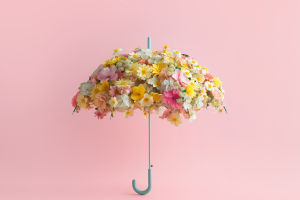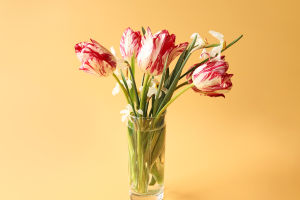Flower arranging, as an ancient and elegant art form, is not merely about the simple combination of flowers and plants; it is a way to express emotions, convey thoughts, and beautify life.
Flower arranging is infused with cultural connotations and carries the philosophy of living.
In this article, we will explore six important meanings of flower arranging, revealing its unique value in our lives.
1. Expressing Emotions
Flower arranging serves as a non-verbal means of emotional expression. Selecting different types of flowers, colors, and arrangements, can convey various emotions such as love, blessings, and mourning.
For instance, red roses are often used to express love, while white lilies symbolize purity and mourning. Whether celebrating special moments or comforting those who have lost loved ones, flower arranging uniquely communicates our feelings.
2. Beautifying Spaces
In modern society, flower arranging is widely used for decorating homes, offices, and public places. The presence of fresh flowers adds color and vitality to the environment, enhancing its beauty.
The fragrance of flowers can also bring joy, improving the overall atmosphere of living and working spaces. Through clever floral design, we can transform an ordinary space into a vibrant and artistic locale.
3. Promoting Mental Health
As a creative activity, flower arranging helps alleviate stress and anxiety. Research indicates that participating in flower arranging can relax the mind and enhance feelings of happiness.
During the process, individuals focus on selecting and arranging each flower, which helps them temporarily forget life's worries. Additionally, flower arranging can serve as a form of meditation, helping individuals find inner peace and tranquility.
4. Cultivating Aesthetic Sensibility
The art of flower arranging requires sensitivity to color, shape, and space. Through learning and practicing this art, individuals can not only enhance their aesthetic sensibility but also better understand and appreciate the beauty of nature.
Each type of flower has its unique form and color combination, and through the process of arranging, we can gain a deeper appreciation of the beauty of floral life and the importance of living in harmony with nature.
5. Cultural Heritage
Flower arranging has a rich history and tradition in many cultures. For example, the Japanese art of Ikebana emphasizes the aesthetics of "empty space," representing simplicity and restraint.
The floral styles of different regions and ethnicities are distinctive, showcasing local natural resources while reflecting the lifestyle and values of the people. By learning flower arranging, we are not just acquiring a skill; we are also passing down and promoting a rich cultural heritage.
6. Enhancing Social Interaction
Flower-arranging activities are often part of social gatherings, promoting interaction and communication among people. In floral workshops or arranging events, participants can share the joy of creation and exchange experiences and techniques.
This interaction not only strengthens friendships but also allows for new connections, expanding social networks. The process of arranging flowers is often filled with laughter and joy, creating a relaxed and enjoyable atmosphere where everyone can find delight.
Through flower arranging, we can express emotions, beautify life, promote mental health, cultivate aesthetic sensibility, preserve cultural heritage, and enhance social interactions. These significances elevate flower arranging beyond mere decoration, making it an indispensable part of our lives. In the hustle and bustle of modern life, take a moment to pause, pick up a vase, and feel the tranquility and joy that flower arranging brings.


